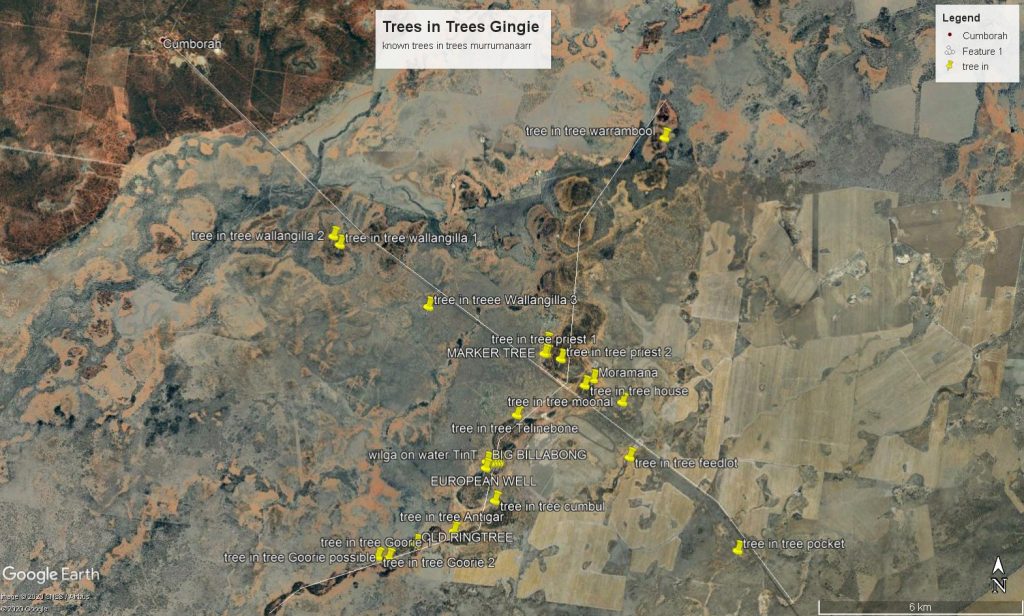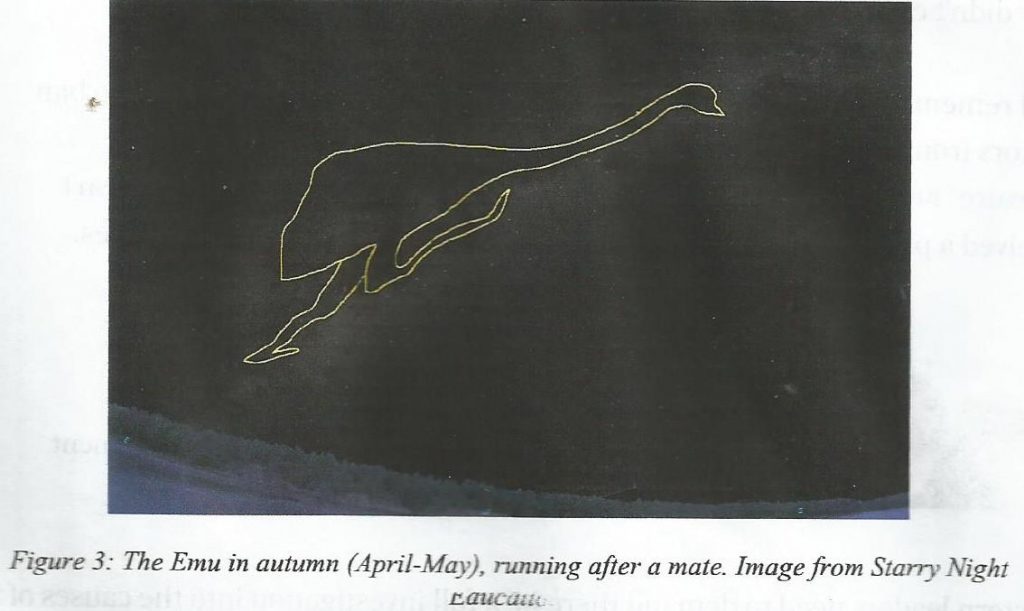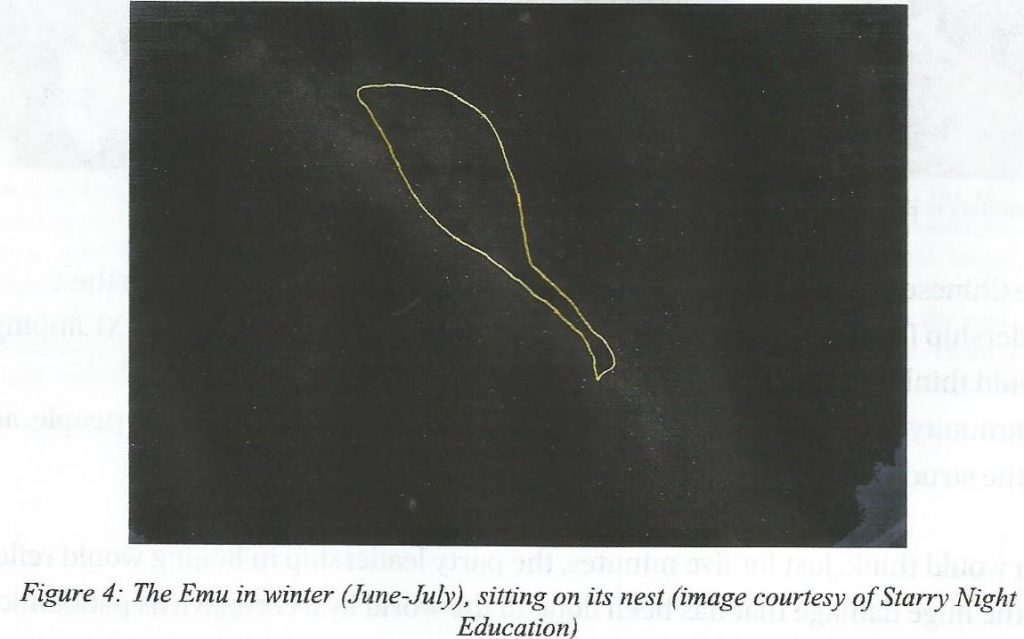I came upon 2 new Trees in Trees out looking for missing sheep this week. The first was a TinT twinset with a stand of unfamiliar small trees in between. Whitewood (Atalaya hemiglauca) has joined the exclusive guest list of native tree types living in old boxtrees. From most to least common we have Wilga, Peach bush, Rosewood, Wild orange, Quinine, Whitewood & Butter bush. AKA Dhiil, Garray yarray, Boonery, Bambul, Gadibundhu, Birah, Guwirra (Gumbie gumbie in Wiradjuri) One of the Bimblebox hosts is dead as is one of the guests that is either another Whitewood or a Rosewood, we will have to await a botanical post mortem. I know this is starting to sound like a particularly grim dinner party in a who dunnit paperback but I don’t think there are any technical woody words for cohabitating trees?

I didn’t find the missing sheep the next day either but did find another TinT near the main road which was the old Aboriginal path or songline. Unfortunately the mid-sized guest Rosewood was also deceased having recently (in tree time) fallen out of its boxtree host but it still had bark & a few dead leaves to identify it. If you would like to take a guess at the dead guests you can find them all in their new archive “Trees in Trees”. Ive also put all the Ringtrees together and will start plotting them sometime too. Anyway you can see clearly the 2 axis – north/south & East/west in this google earth image. The gap between the 3 Priest paddock TinTs and the 1 in Warrambool is explained by the fact the Paleo river goes into neighboring paddocks. When I get time & permission I will go looking in the old camps I know there already by the sheer volume of stone chips, artefacts, scars and the odd ringtree.
Not being indigenous I don’t like to make assumptions about cultural matters but I will say this. Different trees were known to belong to different totems and were considered to be different sexes and have their own souls. Ancestral beings were sometimes turned into trees by Biame/Byarmy for various misdeeds and remain as such today. Songlines were paths that linked important places and the verses of these repetitive songs were widely known. Like a series of lyrical directions that Aboriginal people could recall to find their way in unfamiliar landscapes. Given the hospitable nature of the Gomileroi people these special sandy camps along the songlines may have been revealed to travelers by different TinTs. The camps have good surface water & all local varieties of bush tucker trees & some translocated types as well. The different songlines cross over here at Murrumanaarr and my mate Allan Tighe thinks that trees may have been planted in other trees to reflect a star pattern. Allan (Allo) has a point given the indigenous use of the night sky for navigation as well as an indicator for when some foods were ripe or ready to gather.


The Astronomy of the Kamilaroi People and their Neighbours & The Emu Sky Knowledge of the Kamilaroi and Euahlayi Peoples (Robert S. Fuller1,2, Michael G. Anderson3, Ray P. Norris1,4, Michelle Trudgett1)
The appearance of the emu in the milky way every year is the classic example and if you are interested in Archaeoastronomy you can google the above. For those of you who think all of this is a bit silly I remind you that the whole concept of trees being planted & nurtured inside other trees is a bit out there as well. I know of 25 TinTs here now + a further 5 probable. There will be others likely to be living on neighboring properties to the north & south. I don’t expect to find any west of the big Warrambool as that is Euahlayi country but I do think there will be more turn up across the Barwon because this seems to be a Wailwan practice as well. So take a good look at your big old boxtrees growing around sandy glades guys, they may surprise you!
